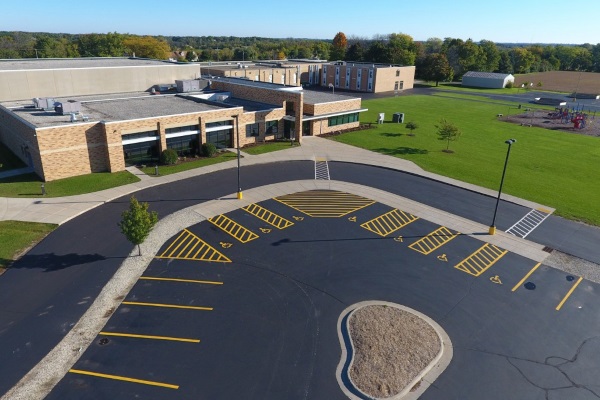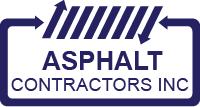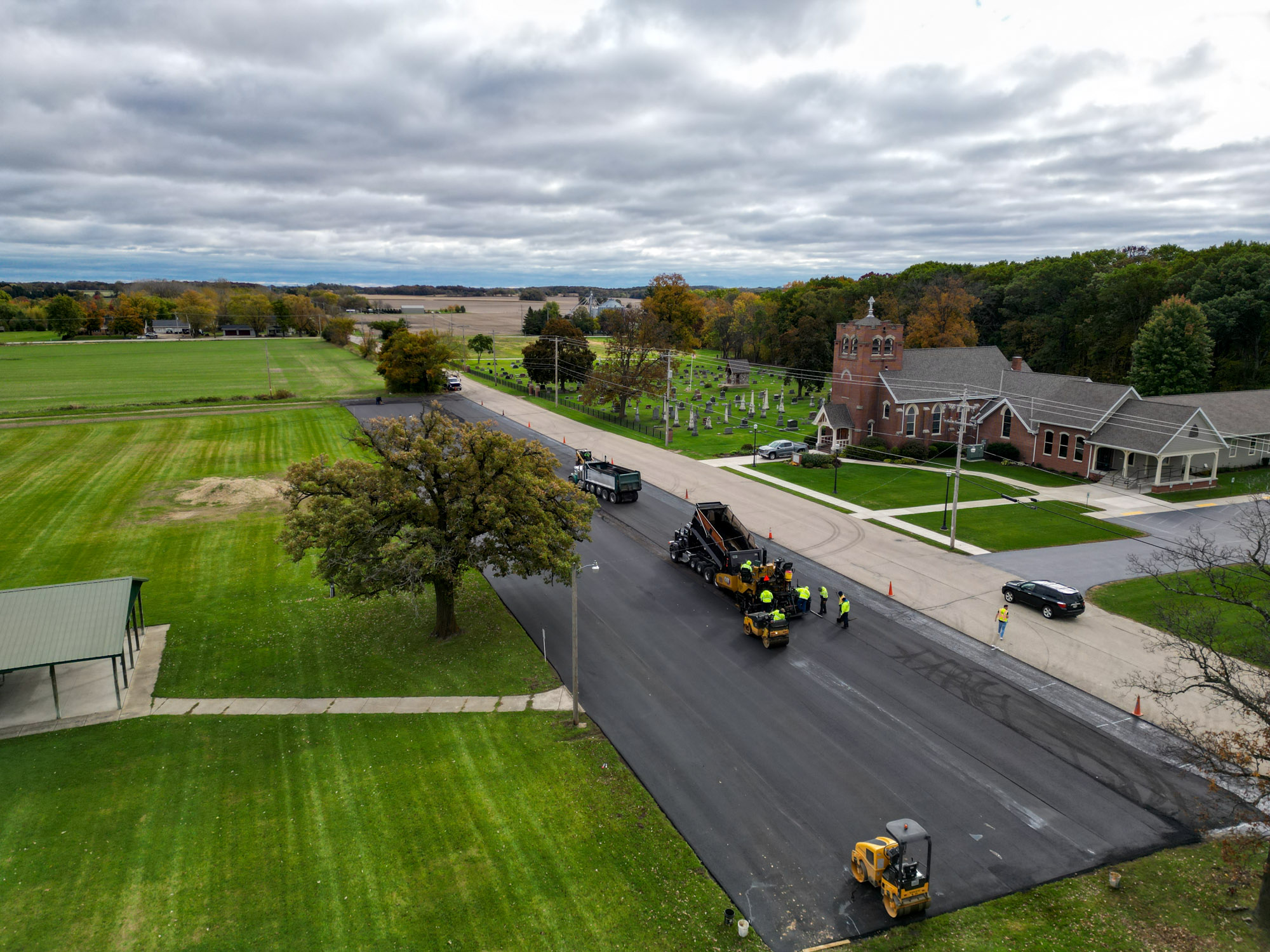ADA Parking Striping Made Simple

ADA parking striping made simple: ensure compliant stalls, aisles, and signs that pass inspections and protect guests. Learn the rules and act now. Start today.
Clear, compliant parking is the first welcome your visitors receive. When your accessible stalls, aisles, and signs follow the Americans with Disabilities Act, you reduce risk, improve safety, and make it easier for everyone to access your building. This guide explains ADA parking striping standards in plain language so you can plan a layout that passes inspections and stands up to daily use.
Asphalt Contractors Inc. has delivered professional paving and striping services across Southeast Wisconsin since 1979. Our team designs, builds, and restripes lots for compliance, longevity, and strong curb appeal. Whether you manage a retail center, medical office, school, or industrial facility, we help you get ADA parking striping right the first time.
Why ADA Parking Striping Matters
Accessible parking affects safety, legal risk, and customer experience. ADA requirements apply to most public and commercial facilities, including private businesses that serve the public. Compliance helps you avoid enforcement actions and lawsuits while showing respect to guests and staff who rely on nearby, barrier-free parking.
- Legal protection: Correct stall counts, dimensions, and signs reduce the chance of complaints and fines.
- Safer access: Proper aisles and routes reduce conflicts with vehicles, curbs, and snow piles.
- Better first impression: Crisp lines and clear signs show that you care about every visitor.
- Lower overall cost: A compliant layout avoids rework after inspections and extends stripe life.
Asphalt Contractors creates ADA parking striping plans around your site conditions, local code, and daily traffic patterns. We handle layout, paint selection, posts, and signs so you get a complete, compliant result.
How Many Accessible Stalls Do You Need
Minimum Stall Counts
The ADA sets minimum numbers of accessible stalls based on the total number of parking spaces in a lot. Use the following guide for quick planning. Local rules can be stricter, so always verify with your municipality.
- 1 to 25 total spaces: 1 accessible stall
- 26 to 50 total spaces: 2 accessible stalls
- 51 to 75 total spaces: 3 accessible stalls
- 76 to 100 total spaces: 4 accessible stalls
- 101 to 150 total spaces: 5 accessible stalls
- 151 to 200 total spaces: 6 accessible stalls
- 201 to 300 total spaces: 7 accessible stalls
- 301 to 400 total spaces: 8 accessible stalls
- 401 to 500 total spaces: 9 accessible stalls
- 501 to 1000 total spaces: 2 percent must be accessible
- Over 1000 total spaces: 20 plus 1 for each 100 over 1000
Van-Accessible Requirements
At least one of every six accessible stalls must be van-accessible, with a minimum of one van-accessible stall in every lot. Van stalls require extra width or a wider access aisle so users can deploy a lift. You may designate more van spaces based on your user needs or local rules, which can be helpful in medical and rehab settings.
Stall and Aisle Dimensions That Pass Inspection
Standard Accessible Stalls
Most facilities meet ADA size requirements using one of two configurations. Pick the layout that fits your site while protecting the accessible route from traffic and snow.
- Option A: 8 foot stall with a 5 foot access aisle
- Option B: 11 foot stall with a 5 foot access aisle
Both choices are acceptable for standard accessible parking when paired with the correct aisle. Many property owners prefer Option A because it lines up well with typical lot modules, but Option B can improve door clearance where aisles are tight.
Van-Accessible Stalls
Van stalls must include at least 8 feet of clear width for a lift. There are two common ways to meet the requirement:
- 8 foot stall with an 8 foot access aisle
- 11 foot stall with a 5 foot access aisle
Choose one method consistently to simplify layout and signage. The access aisle must be marked to discourage parking and must be level with the stall. Asphalt Contractors can walk your site and recommend the best option to limit rework and snow damage.
Access Aisles and Crosshatching
Access aisles provide space for side transfers, walkers, and lifts. They must run the full length of the stall, align with the passenger side where possible, and connect to an accessible route without steps or curbs. Aisles require clear striping, typically diagonal crosshatching with spacing that is easy to see in all light conditions.
- Hatch lines commonly set at 12 to 24 inches apart
- High contrast colors improve visibility
- Paint No Parking text in the aisle if your local code calls for it
Do not place wheel stops or bollards inside the access aisle. These objects create tripping hazards and reduce the usable clear space.
Location and Accessible Route
Accessible parking must be on the shortest accessible path to the accessible entrance. Place the stalls on the nearest side of the building with a protected route that avoids vehicle conflict. The path cannot require users to move behind parked cars or cross active drive aisles without a marked crosswalk.
- Accessible route width: at least 36 inches clear, 48 inches preferred in winter climates
- No steps or curbs; use curb ramps where needed
- Ramps must not project into the access aisle
Asphalt Contractors reviews doorway locations, sidewalks, ramps, and snowplow patterns to keep the route safe year-round. In Wisconsin, snow storage can block aisles if not planned. We design routes that stay open after storms.
Pavement Slopes and Surfaces
Stalls and access aisles must be nearly level to prevent wheelchairs from rolling or doors from slamming shut. The slope requirement is strict and commonly measured during inspection.
- Maximum slope in any direction: 1:48, which is about 2.08 percent
- Surface must be firm, stable, and slip-resistant
- Drainage should not collect in aisles or at ramp landings
Asphalt Contractors can mill, patch, or overlay small areas to correct slopes before striping. Our in-house asphalt manufacturing and paving crews help control schedule and quality so your lot meets the 1:48 standard.
Signage That Meets ADA
Parking Space Signs
Every accessible stall needs a sign that shows the International Symbol of Accessibility. Van-accessible stalls require an extra sign that states Van Accessible. Signs must be visible above parked vehicles and must be placed at the head of the stall or on an adjacent post on the passenger side.
- Sign height: at least 60 inches from ground to bottom of sign
- Mount signs so they do not block the accessible route
- Use reflective sheeting for night visibility
Some cities also require penalty text or specific colors. Asphalt Contractors installs posts, hardware, and signs that match local code and resist winter wear.
Pavement Symbols and Legends
Most jurisdictions ask for a wheelchair symbol painted on the stall surface. Common practice is a white symbol on a blue background pad, sized to be clearly visible from the drive aisle. Check your local standard for symbol size and color. Many approve a symbol at least 36 inches wide for standard stalls and a larger symbol for van stalls.
Pavement text such as Van Accessible or No Parking in the aisle can help drivers make the right choice. Crisp, high contrast paint with glass beads improves nighttime visibility.
Directional and Wayfinding Signs
For large lots or multi-tenant sites, use directional signs to guide drivers to the accessible parking area. Add crosswalk markings and stop bars to protect the accessible route near the entrance. Good wayfinding reduces confusion and shortens the time disabled drivers spend searching for a space.
Materials and Methods for Lasting Striping
Wisconsin weather is tough on pavement markings. Using the right materials and application methods will extend the life of your ADA parking striping and reduce maintenance costs.
- Waterborne acrylic paint: Fast drying, cost effective, common for restriping
- Epoxy or polyurea: Durable coatings for high-traffic areas and parking structures
- Thermoplastic: Very long life on stable surfaces, best for concrete or high-wear zones
- Glass beads: Improve retroreflectivity for night visibility
Surface prep is vital. Clean the area, remove loose paint, and make sure the surface is dry. When sealing or paving, allow proper cure time before striping. Temperature and humidity affect adhesion and dry time, so plan work windows carefully. Asphalt Contractors schedules striping when conditions support strong bonds and sharp lines, and we use calibrated equipment for consistent widths and spacing.
Maintenance, Restriping, and Seasonal Care
Even the best striping fades under UV light, salt, and traffic. A maintenance plan keeps your ADA parking striping visible and compliant.
- Inspection: Walk the lot every spring and fall to check signs, posts, slopes, and paint visibility
- Restriping: Typically every 18 to 24 months, or sooner if paint loses contrast
- Sealcoating: Coordinate sealcoat and striping so the accessible symbols and aisles remain clear
- Snow plan: Keep plowed snow out of accessible stalls and aisles
- Sign repairs: Replace bent or missing signs quickly to avoid citations
Asphalt Contractors offers scheduled restriping and on-call repairs across Racine, Kenosha, Walworth, Waukesha, and Milwaukee counties. Our team can refresh only the accessible area or update the entire lot for a uniform look.
Common ADA Parking Striping Mistakes to Avoid
- Wrong stall count for the total number of spaces
- No van-accessible stall or missing Van Accessible sign
- Access aisle too narrow or too short
- Curb ramp built inside the access aisle
- Slopes steeper than 2 percent in stalls or aisles
- Signs mounted too low or blocked by landscaping
- Faded paint that no longer contrasts with the pavement
- Wheel stops or bollards encroaching on the accessible route
- Accessible stalls placed far from the accessible entrance
These issues often lead to failed inspections and costly rework. Asphalt Contractors prevents them with field measurements, clear drawings, and quality control during installation.
Our ADA Parking Striping Process
Asphalt Contractors Inc. follows a proven workflow to deliver compliant, long-lasting results. Here is how we make ADA parking striping simple for property owners and managers.
- Site review: We count existing spaces, identify entrances, and map the accessible route.
- Measurement: We verify slopes with digital levels and note drainage and curb ramp locations.
- Layout plan: We design stall and aisle sizes, van locations, and sign placement that meet ADA and local code.
- Owner coordination: We review phasing to keep your business open and safe during work.
- Surface prep: We clean, dry, and prime surfaces as needed for durable adhesion.
- Striping: We apply high-contrast paint with precise line widths and add glass beads for reflectivity.
- Sign install: We set posts to correct height, mount signs, and check sight lines.
- Final check: We walk the site, confirm dimensions, and make touch-ups as needed.
- Documentation: We can provide layout drawings or photos for your records and inspections.
Because Asphalt Contractors manufactures asphalt and provides full paving services, we can also correct grades, repair potholes, add curb ramps, or reconfigure islands to support your ADA plan. This integrated approach helps you solve problems once instead of calling multiple vendors.
FAQs About ADA Parking Striping
Do existing lots have to upgrade
Existing facilities must remove barriers when it is readily achievable. When you resurface or restripe, you must bring the accessible parking into compliance with current standards. A quick site assessment from Asphalt Contractors can show you the highest value upgrades for your budget.
How long before we can drive on fresh striping
Dry time depends on material and weather. Waterborne paints often dry to the touch in 30 to 60 minutes, but we typically reopen areas after 2 to 4 hours. High-build coatings and cool weather may require more time. We will phase the project to keep access open.
What colors should we use
ADA does not dictate stripe colors, but many local codes call for white or yellow stall lines, blue background pads for the symbol, and white symbols. We confirm local requirements and apply high-contrast colors that hold up through winter.
Can accessible stalls be shared between buildings
Shared parking is allowed if the spaces are on the shortest accessible route to each accessible entrance they serve. Signs and wayfinding should make the locations obvious. We can help plan shared lots so you meet counts and protect the accessible route.
What if slopes are over 2 percent
Excess slope is a common reason for failed inspections. Solutions include localized milling, patching, or a small overlay to flatten the stall and aisle area. Asphalt Contractors evaluates the least invasive fix that still passes the 1:48 slope requirement.
ADA Parking Striping Checklist
- Confirm total space count and required accessible stalls
- Provide at least one van-accessible stall for every six accessible stalls
- Use correct stall and aisle widths for chosen configuration
- Keep stall and aisle slopes at or below 2 percent in all directions
- Place stalls on the shortest accessible route to the accessible entrance
- Install curb ramps where needed without projecting into the aisle
- Stripe aisles with high-contrast crosshatching and No Parking as required
- Mount accessible and Van Accessible signs at least 60 inches to the bottom of the sign
- Paint clear pavement symbols at the required size and color
- Plan snow storage away from accessible stalls and aisles
Why Choose Asphalt Contractors for ADA Parking Striping
Asphalt Contractors Inc., based in Union Grove, Wisconsin, has been paving and striping since 1979. We serve Racine, Kenosha, Walworth, Waukesha, and Milwaukee counties with complete asphalt and concrete services. By manufacturing our own asphalt and using certified crews and equipment, we control quality from the plant to the paint line. That means your ADA parking striping is accurate, durable, and completed on schedule.
- Full-service delivery: layout, paving, striping, signs, and concrete ramps
- Experienced team: decades of ADA compliance and local code knowledge
- Right materials: coatings matched to traffic, weather, and budget
- Clean work zones: phased plans to keep businesses open and safe
- Long-term value: designs that reduce rework and maintenance
From small refresh projects to full lot rebuilds, Asphalt Contractors brings the same focus on safety, clarity, and compliance to every job. Our team is ready to assess your site and provide a clear plan with straight pricing.
Get Started Today
ADA parking striping is more than paint. It is a set of rules that protect people and reduce risk. With the right counts, dimensions, slopes, and signs, your lot will pass inspections and welcome every visitor. Asphalt Contractors makes the process simple. We measure, plan, and deliver a compliant layout that looks great and lasts through Wisconsin winters.
Schedule a site assessment with Asphalt Contractors today. We will review your current layout, confirm what must change, and provide a proposal with clear steps and timing. Protect your guests, your business, and your brand with ADA parking striping done right.


